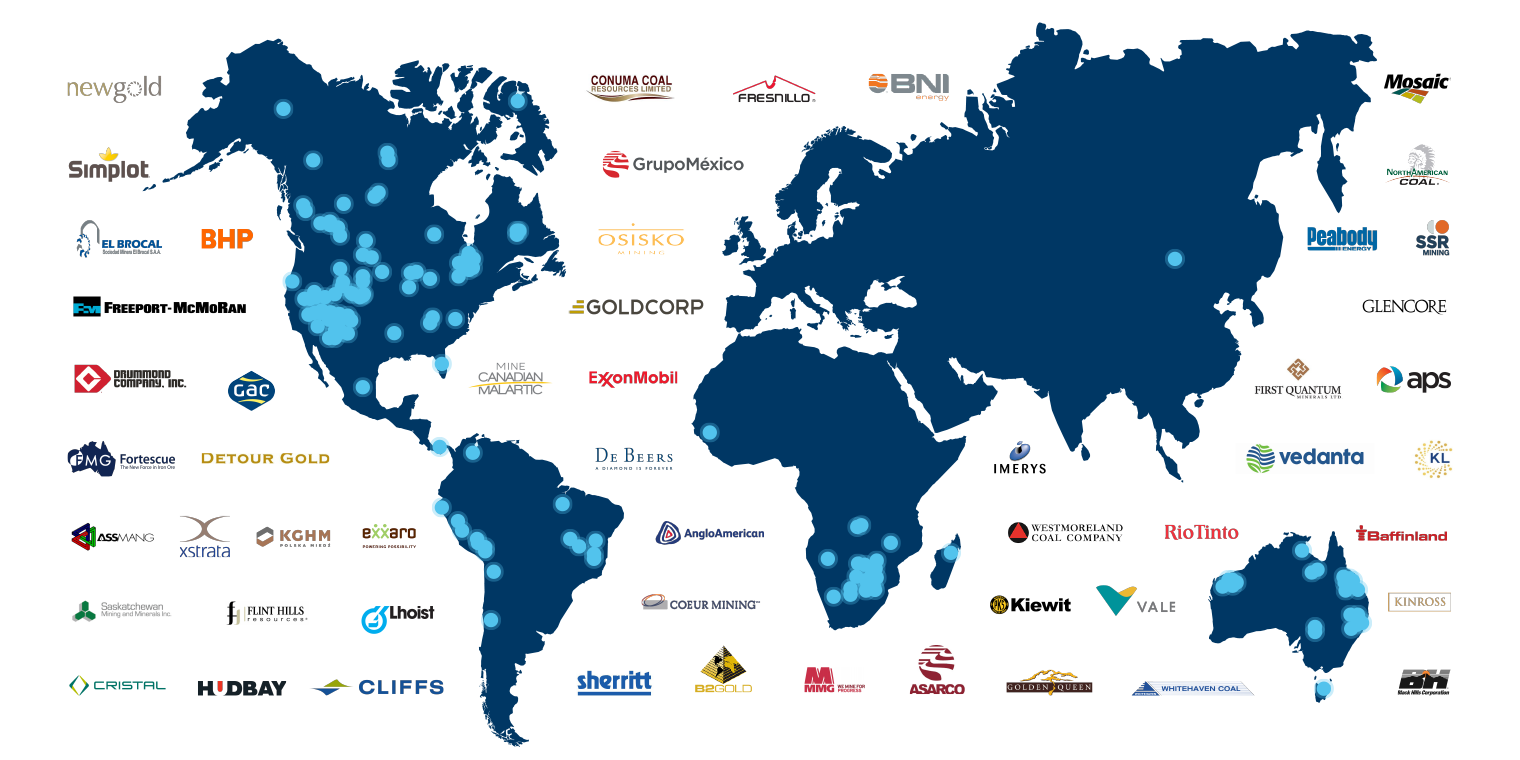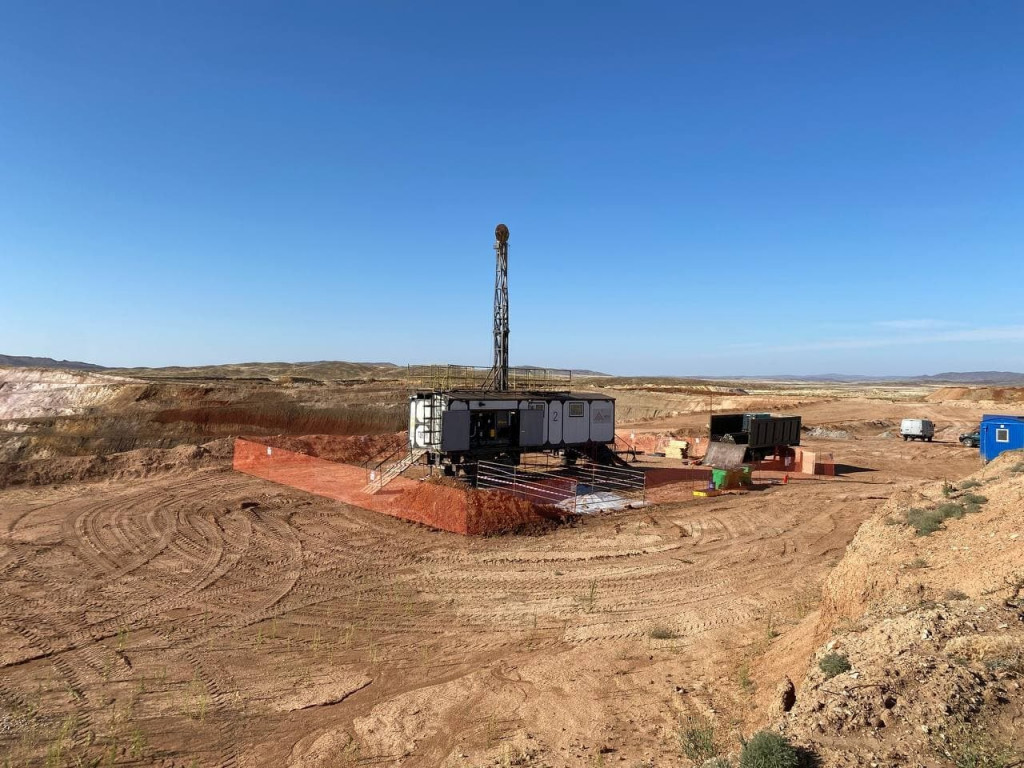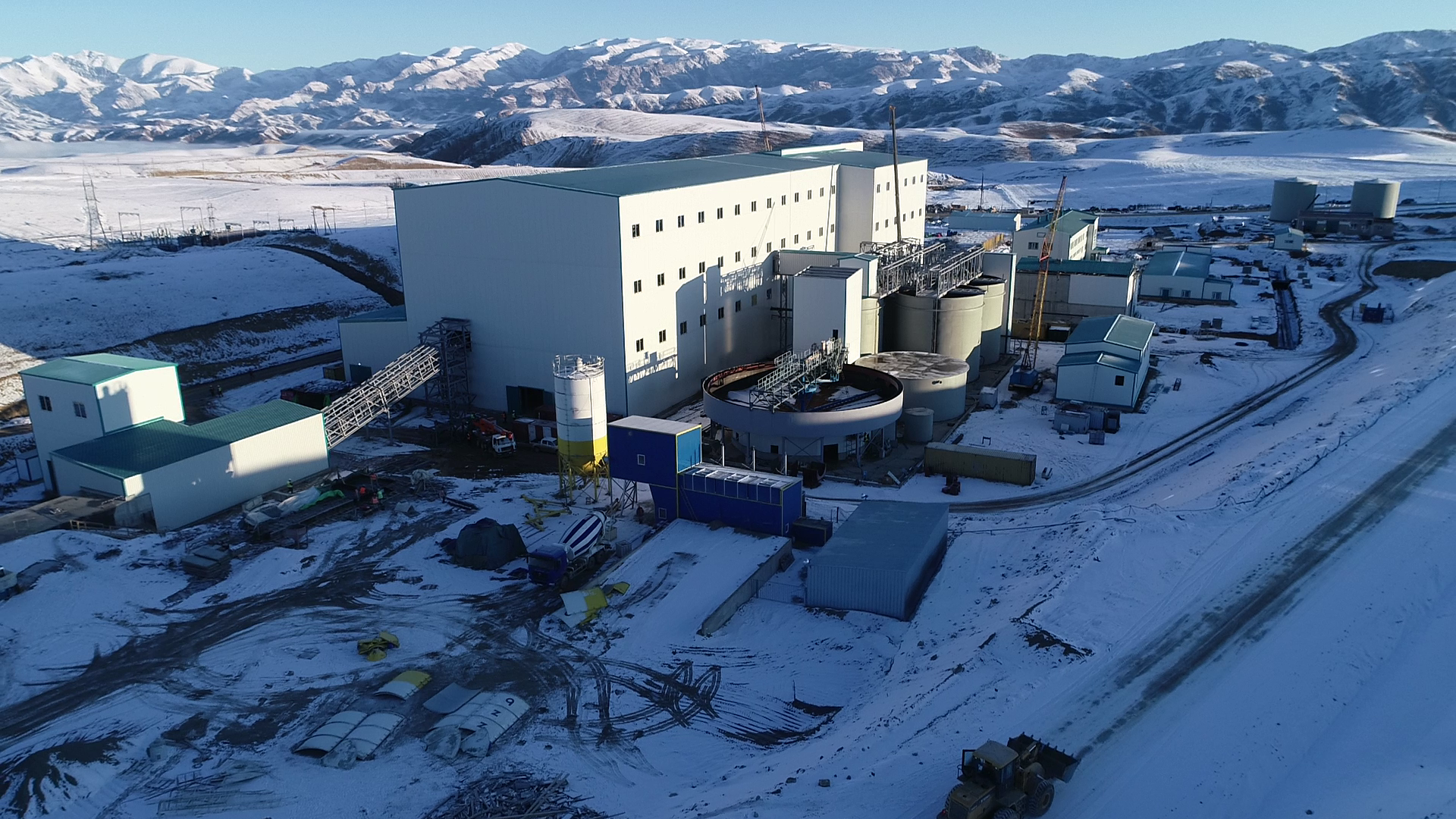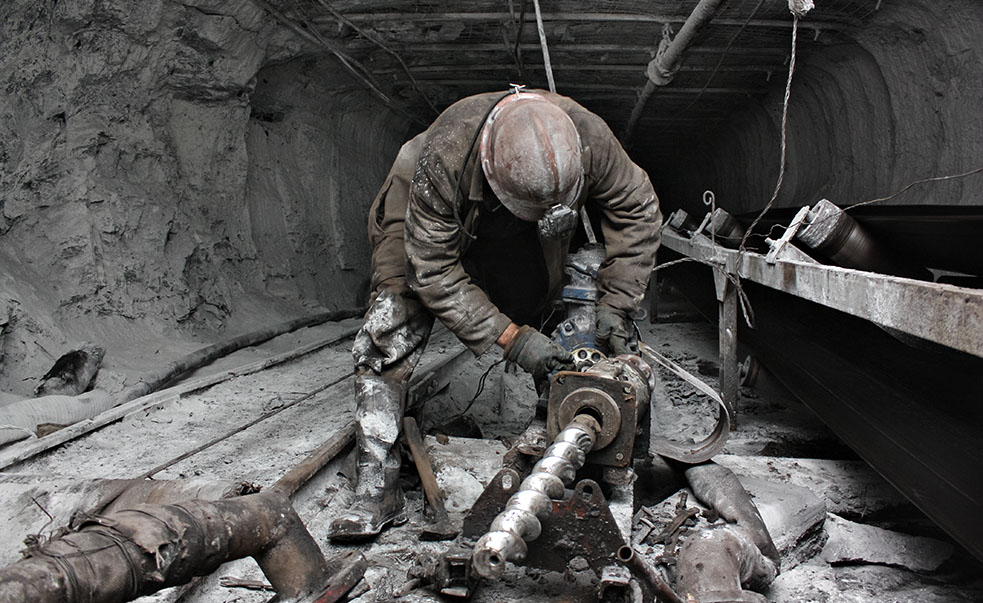
More than ten years of experience in the mining industry. Including the introduction of integrated solutions to optimize the transport of equipment, drilling and blasting, project management for the discovery of new deposits, the implementation of turnkey communication solutions.
Marcin Kusztal
Rajant Sales Director for CEE and CIS Rajant Corporation
Session 9
07 April 2022 / 14:30 – 16:00 | Sary Arka 1
Choosing the right network for your mine
• Modern Mining Challenges
• Digitization and Proof of Operations
• Communication Networks and Mining Challenges (Technology Review)
• Hybrid Network / Stronger Together – Rajant (InstaMesh)+WiFi+LTE

Source: SRK Consulting | Download publication
By: Jane Joughin
The materiality of climate action in mineral resource and reserve reporting will surge in the decade ahead. Climate action is already of high interest to investors. The primary framework for discourse on climate action between companies and their investors is currently the recommendations of the Taskforce for Climate-Related Financial Disclosures (TCFD). Miners need to make disclosures in accordance with these recommendations. Identified risks and strategies, and associated targets and metrics, presented in TCFD disclosures should be assessed as part of the mineral resource and reserve reporting process.

Source: Aurora Minerals Group
Aurora Minerals Group is committed to implementing ESG (environmental, social, governance) policies in its exploration activities. ESG environmental principles are reflected in the preparation of drilling sites during drilling operations.


When preparing drilling sites, the goal is to create a safe work area for personnel and minimize the impact of operations on the environment. In particular, the drilling site is fenced in with a tight signal fence to prevent intrusion by unauthorized persons, wild animals and pets. In addition, a banner with company information, contact numbers and a list of necessary personal protective equipment is posted in front of the site entrance.


Inside the site, storage areas for fuel and lubricants, pallets for them, separation of waste into different containers, depending on the type of formation, are organized. In addition, a smoking area, a container for cigarette butts, and a fire extinguisher are organized. Furthermore, drilling rigs and transport are equipped with oil spill response kits (OSR).

Waterproofing is arranged under the machines to prevent the penetration of fuel and technical liquids into the soil.

Preparation of an earthen sump, the topsoil layer is cut off by the bulldozer blade and moved to a new location. In the future, the removed top soil will be used for the reclamation of disturbed land.


The pre-excavated sumps are also fenced to prevent wild and domestic animals from falling into them.


At the beginning of works, the sump is fenced with a rigid fence protecting the personnel from falling and is waterproofed by laying polyethylene on the bottom, walls and channels (gutters). After the well is completed, the sump is pumped out, and the polyethylene is removed.


When the wells are completed, the clarified liquid phase is pumped out for further use or disposal. After clearing the site, excavation work is carried out to return and flatten the previously-stored fertile layer.
The Group intends to continue to work to improve exploration practices and implement ESG policies.

On March 09, 2021 Kazakh EPC contractor AAEngineering Group LLP commissioned the Talas Gold Ore Plant at Dzherui mine to the operator Alliance Altyn LLC.
The design and construction of this facility was implemented from 2018 to 2021.
On 17 March this year, President of the Russian Federation Vladimir Putin and President of the Kyrgyz Republic Sadyr Japarov launched the Talas gold mine at the Dzherui mine in Kyrgyzstan. Putin participated in the ceremony via videoconferencing.
Dzherui gold mine in Talas region of Kyrgyzstan was discovered by geologists of the Northern kyrgz expedition in 1968-1969. However, only 17 years later design and survey works were carried out and the feasibility study project was developed. Soviet authorities planned to start construction of gold mining complex in Dzherui at the same time, but due to collapse of USSR the whole project was not implemented at that time.
The design capacity of the combine is 1.3 million tonnes of ore per year.

The acceleration of new technologies is transforming the way a range of industries operate. In particular, there has never been a greater need for digitalization within the coal sector, as mining operators juggle the necessity for profitability versus the requirement to drastically reduce running costs, heighten efficiency and improve safety performance. With mines growing deeper underground, it is also becoming abundantly clear that technology will play a huge part, both now and in the future.
Mining technology has improved immensely over time, but the machinery, devices and vehicles used still make it a very hazardous business. As a result, increasing numbers of next-generation technologies such as sensors, automated or self-controlled equipment, and data-heavy automation solutions are being adopted to allow for smoother and more efficient mining operations. However, all of this requires reliable, high-bandwidth connectivity to manage the large amounts of data necessary for the successful daily running of a mine.
Dig a little deeper
High-bandwidth, and robust networks are imperative for the mission-critical communications that take place within the mine—both above and below ground. Fibre optic networks are just one enabler of the flexible and high-bandwidth communications demanded by the mining industry and provide the essential connectivity. However, installing fibre in active drives, panels, and declines can often be difficult to schedule and can create operational and maintenance nightmares.
Underground mines are also some of the most challenging places to deploy fibre, due to their harsh climatic and operational nature. Deploying and maintaining wired connectivity is expensive too, with fibre networks needing a great deal of care and management. It is also not uncommon for trucks to accidentally catch and rip down fibre sections, potentially resulting in complete connectivity loss across the entire underground mine.
With mines reliant on their communication infrastructure for essential safety systems and the critical link between operations underground and those working on the surface, network failure is not an option. Any outages or failures can result in downtime, the costs of which scale rapidly with duration. In order to avoid this, it is vital that companies adopt high-performance, high-quality and long-life solutions that enable seamless underground connectivity.
Automated operations
Deploying automatic equipment for drilling and haulage, mines achieve production gains without an operator’s presence. Equally, this contributes to avoiding worker fatigue, which can, in turn, mitigate safety risks. The use of autonomous assets in the mine’s riskiest sections reduces the number of people working in dangerous areas by more than 50%, significantly contributing to personnel safety. This is extremely beneficial, as the International Labour Organisation (ILO) notes, that while mining only employs around 1% of the global labour force, it generates 8% of the world’s fatal accidents.
While losing connectivity in an emergency can be disastrous in terms of safety, security, and productivity levels, the rapid increase in mining technology has created an even larger need for ‘always-on’ connectivity. Autonomous applications and connected devices need to consume and transmit large volumes of data continuously and critically with low-latency, in order to function efficiently or at all. This is not only bandwidth-intensive and delay sensitive, but there must be no single points of failure or dropouts that will interrupt the flow of information between data centers and operational assets. The challenge for operators with autonomous technologies is maintaining connectivity to all connected devices.
Data is set to become the lifeblood of successful mines, meaning that the ability to store and receive data messages is critical to delivering real-time visibility of personnel and assets. However, a mine’s capability to capture and act on its equipment data will rely solely on its network infrastructure. Therefore, operators must select a wireless network that can rise to the demands of data-driven mining applications, including the ability to provide scalable bandwidth, signal resilience, and mission-critical mobile connectivity.
A solution is at hand
Mines are constantly seeking ways to minimize worker exposure in their highly hazardous environments and to do so, they require a network which can move with its rigorous operations. Some mining operators are installing flexible ‘mesh’ networks. These consist of devices that can transmit and receive data autonomously (known as nodes) being fitted to machines and people in a network comprised of hundreds of similar devices that can all communicate directly with each other.
Rajant’s wireless Kinetic Mesh® network is built specifically to suit the mining industry’s characteristics, as it provides highly mobile connections in industrial environments. Through its robustness and mobility, Kinetic Mesh can provide unwavering connection in the adverse and changing conditions typical of the underground mining industry, and therefore deliver reliable communication for operators.
Rajant BreadCrumb® nodes work via multiple frequency peer to peer connections and can be fixed or mobile. For example, connections can be made between moving assets, such as trucks or people, enabling all-to-all communications between mobile equipment. Every node in a Kinetic Mesh network can act independently and with full routing capabilities. They can receive and transmit data simultaneously, meaning they can be receiving information from any another connected device. Additionally, whilst providing this resilient mesh network connectivity, Rajant Breadcrumbs can also simultaneously act as a local Wi-Fi transmitter. This critical functionality allows the adoption of real-time location solutions for tracking and tagging machinery and personnel.
This ubiquitous connectivity and flexibility of applications is made possible through Rajant InstaMesh® networking protocol, which dynamically and automatically selects the fastest route for traffic and re-routes communications to the next best path if the first becomes blocked or unavailable. Downtime is avoided to ensure underground mining’s subterranean conditions will not compromise network performance.
Connectivity in action
Being able to reliably transmit and receive data from autonomous or remotely controlled assets provides two benefits. First, staff above ground can capture and analyse real-time operational data. Second, autonomous vehicles can perform tasks without humans present in difficult and dangerous locations. In these expansive and hazardous environments, it is vital that the network be able to reach every corner of the mine and adapt with miners’ movements to provide constant, uninterrupted communications between miners and their support teams, ensuring fast, timely responses, especially in emergencies.
To provide an example of Rajant Kinetic Mesh wireless networks in action, Rajant and Hitachi Construction Machinery Australia are improving operational safety and productivity through the use of autonomous haulage systems in an Australian coal mine. Hitachi selected Rajant Kinetic Mesh because it is the only industrial wireless network enabling vehicle-to-vehicle (V2V) communication, allowing autonomous vehicles to talk directly to each other, providing enhanced coverage and reliability.
There are currently six autonomous haul trucks active in production areas of Hitachi’s Australian coal mine deployment, scaling to over 45 next year utilising Rajant communications. The mine’s existing Rajant wireless network was deployed across many mobile and fixed infrastructure that easily met the requirements to support and enable Hitachi’s autonomous operations. Hitachi has experienced and witnessed Rajant’s networks dynamically adapting to evolving conditions and making multiple connections over multiple frequencies per node for continuous connectivity.
At the coalface of change
A report by theWorld Economic Forum and Accenture, forecasts that by 2025 digitalization will have added more than US $425 billion of value to the mining industry, with around 1,000 lives saved and 44,000 injuries prevented. As such, the sector will rely more and more on next-generation technology as it increasingly demands higher efficiency and profits. With so much riding on their networks, it is essential that companies take advantage of wireless mesh networks that are simple, risk-free and cost-effective. By utilizing wireless mesh technology it will help upgrade and improve performance within the mine while offering easy adaptability and expansion for future requirements.
Miners can be confident that they will receive invaluable data in real-time, which will empower them to make well-informed decisions for the future. Not only this, but with the right network in place, mines will be able to embrace autonomy and provide the safety-enhancing and productivity-increasing applications that every modern mine demands.


